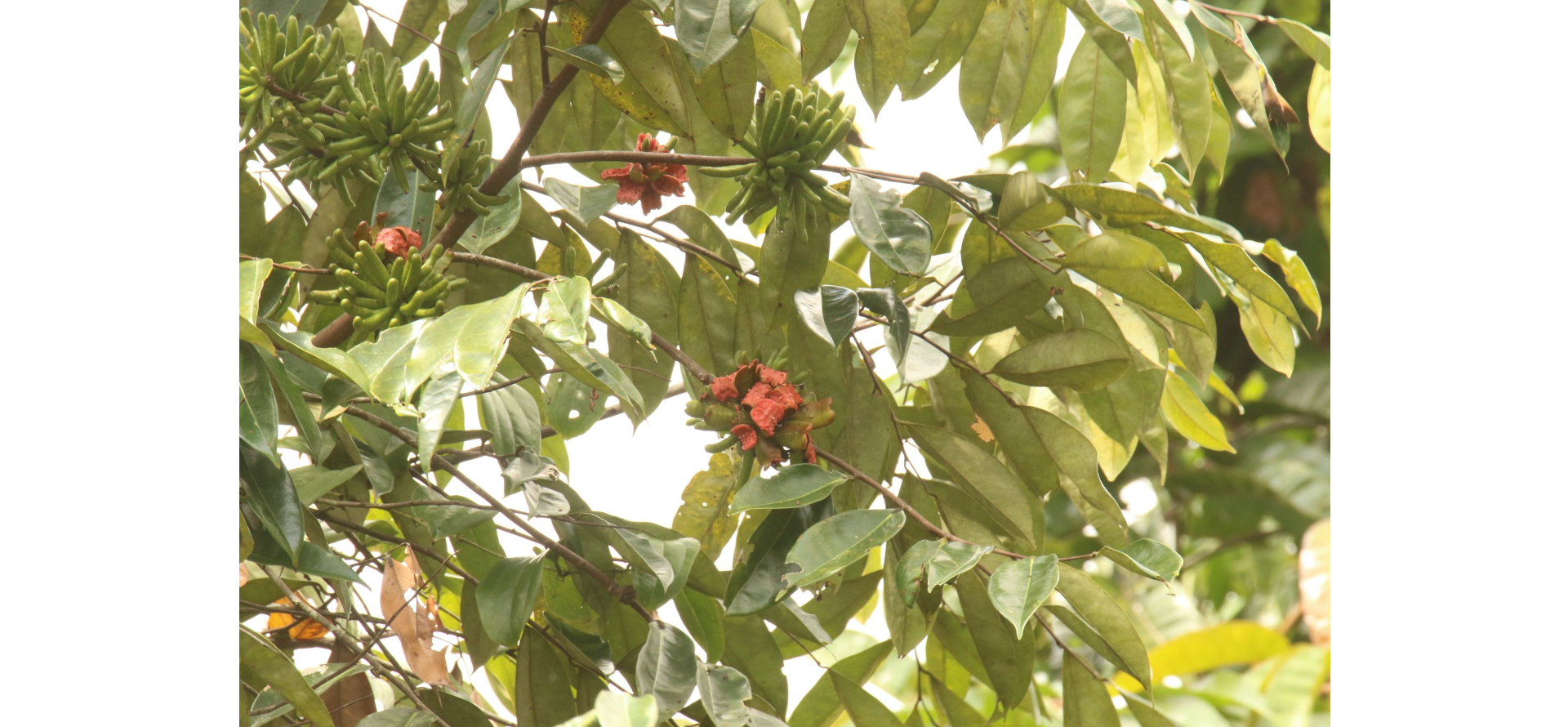Xylopia aethiopica

|
|
Xylopia aethiopica Common Names: Negro Pepper, Ethiopian Pepper, Guinea
Pepper, African Pepper, Grains of Selim Scientific
Classification Kingdom: Plantae Clade: Tracheophytes Clade: Angiosperms Clade: Magnoliids Order: Magnoliales Family: Annonaceae Genus: Xylopia Species: X. aethiopica Binomial Name: Xylopia aethiopica (Dunal) A.Rich. Synonyms: Annona aethiopica Dunal, Habzelia aethiopica A.DC., Unona aethiopica Dunal Morphological Description Xylopia aethiopica, commonly known as Ethiopian Pepper or Grains of Selim, is an
evergreen, aromatic tree growing 15–30 m tall with a trunk diameter of 60–70
cm. It is characterized by: · Bark: Grey-brown, smooth when young, becoming fissured with age · Leaves: Oblong-elliptic, 6–12 cm long, 3–5 cm wide, glossy green,
with a leathery texture · Flowers: Small, greenish-white, 5–8 mm long, in clusters, blooming
year-round in tropics · Fruit: Cylindrical pods, 2–5 cm long, dark brown to black when
dried, highly aromatic The dried fruits, known
as "grains of Selim," release a pungent, peppery scent when crushed
(Orwa et al., 2009). Distribution and Habitat Xylopia aethiopica is native to tropical Africa, spanning Senegal to Sudan in
the east, south to Angola, and including Ghana, Nigeria, and Cameroon. It
thrives in: · Habitats: Lowland rainforests, moist fringe forests, savanna
woodlands, riverine areas · Climate: Tropical, with rainfall of 1,000–2,500 mm annually,
temperatures of 22–32°C · Soil Conditions: Well-drained loamy or sandy soils (pH
5.0–6.5) · Elevation: Sea level to 1,800 m It is cultivated
prominently in Ghana and Togo as a spice crop (Fetse et al., 2016). Ethnopharmacology Xylopia aethiopica, commonly known as Ethiopian pepper, Negro pepper, or African
guinea pepper, is a widely used medicinal plant in traditional African
medicine. Its fruits, seeds, bark, and leaves are utilized for their potent
therapeutic properties, including antimicrobial, anti-inflammatory, analgesic,
antioxidant, antimalarial, antifungal, antihypertensive, and uterotonic
effects. Traditionally, it is used to treat respiratory issues (like coughs,
bronchitis, and asthma), digestive problems (such as dysentery and
indigestion), fevers, rheumatism, and infections. The fruit is often included
in postpartum care to help cleanse the uterus and restore maternal health.
Phytochemical studies have revealed the presence of alkaloids, flavonoids,
terpenoids, saponins, and essential oils, including xylopic acid, which is
linked to many of its pharmacological effects. While widely respected in
traditional medicine, further research is needed to fully validate its
therapeutic benefits and establish standardized dosages for clinical use. · Antimicrobial: Seed extracts inhibit Staphylococcus aureus (MIC 64 µg/mL), used in Cameroon for
infections (Fankam et al., 2011). · Anti-inflammatory: Leaf extracts reduce TNF-α in macrophages
(>90% at 500 µg/mL), used in Guinea-Bissau for rheumatism (Macedo et al.,
2020). · Gastrointestinal Treatment: Fruit decoctions treat dysentery in Ghana,
with tannins aiding gut health (Obiri et al., 2013). · Respiratory Health: Fruit extracts suppress asthma in mice,
used in Nigeria for bronchitis (Obiri et al., 2013). · Postpartum Care: Fruits in pepper soup enhance lactation in
Togo, with anti-anaphylactic effects (Obiri et al., 2013). ⚠ Toxicity Profile: No acute toxicity at traditional doses (LD₅₀
> 5,000 mg/kg in rats), but high doses of kauranes may cause organ toxicity
in rats. Overuse may lead to gastrointestinal irritation; moderation is advised
(Fetse et al., 2016). Additional Uses · Culinary: Dried fruits flavor soups and stews in West Africa,
imparting a peppery taste · Economic: Termite-resistant wood used for construction and furniture
in Senegal · Cultural: Seeds burned as incense in Ghanaian rituals · Ethnoveterinary: Leaf extracts treat livestock infections
in Nigeria References
External Links More Pictures |
|
| Compounds of Xylopia aethiopica | |
| References |